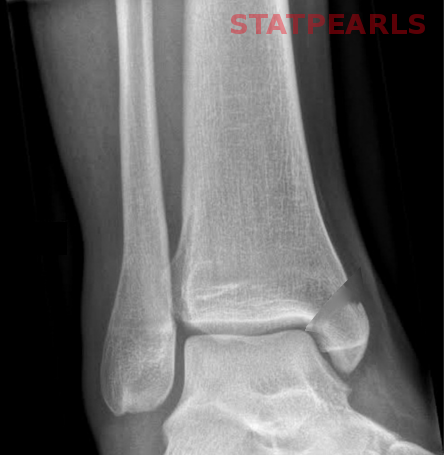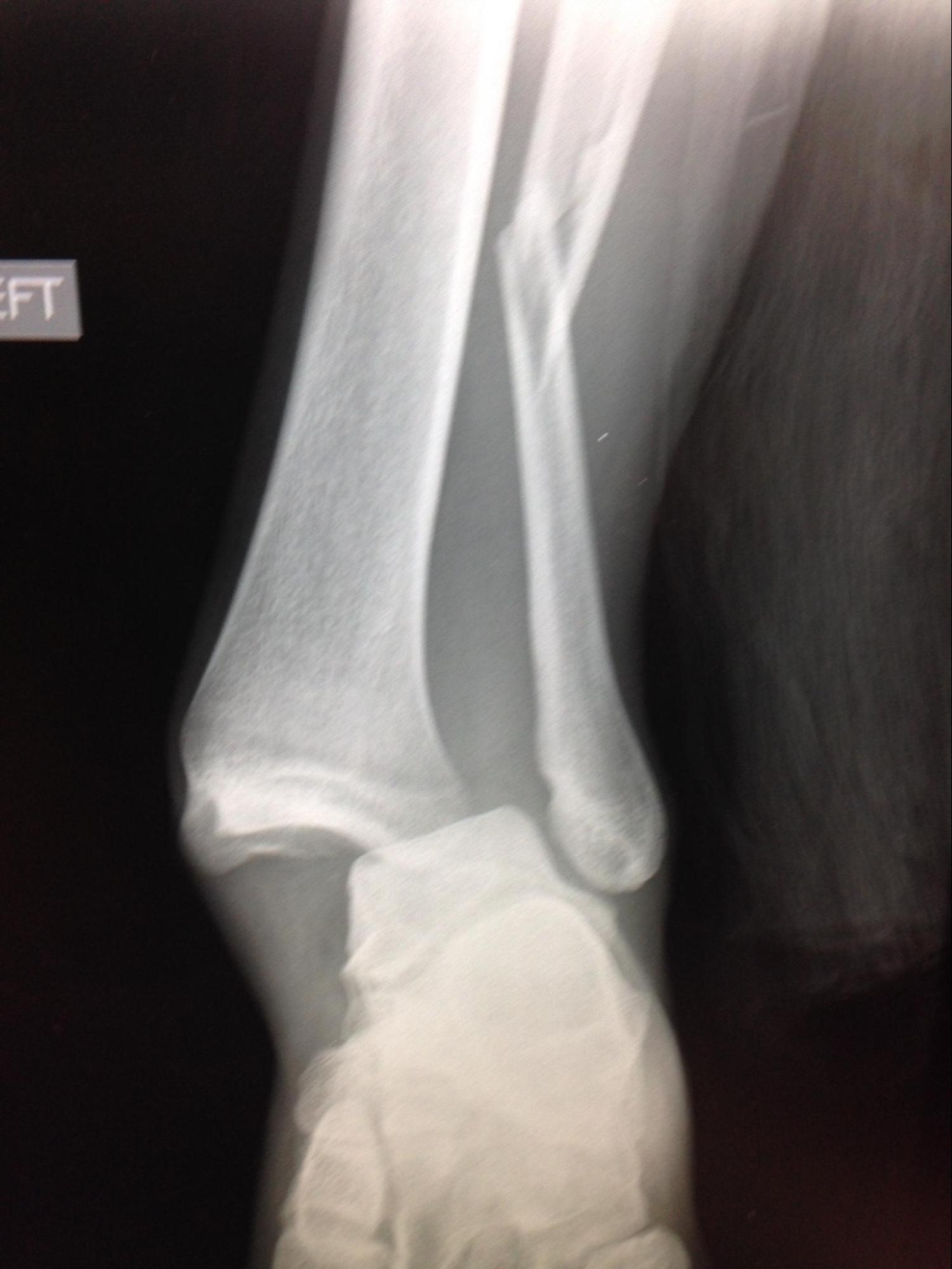[1]
Feldman DS, Otsuka NY, Hedden DM. Extra-articular triplane fracture of the distal tibial epiphysis. Journal of pediatric orthopedics. 1995 Jul-Aug:15(4):479-81
[PubMed PMID: 7560039]
[2]
Kay RM, Matthys GA. Pediatric ankle fractures: evaluation and treatment. The Journal of the American Academy of Orthopaedic Surgeons. 2001 Jul-Aug:9(4):268-78
[PubMed PMID: 11476537]
[3]
Wuerz TH, Gurd DP. Pediatric physeal ankle fracture. The Journal of the American Academy of Orthopaedic Surgeons. 2013 Apr:21(4):234-44. doi: 10.5435/JAAOS-21-04-234. Epub
[PubMed PMID: 23545729]
[4]
King J, Diefendorf D, Apthorp J, Negrete VF, Carlson M. Analysis of 429 fractures in 189 battered children. Journal of pediatric orthopedics. 1988 Sep-Oct:8(5):585-9
[PubMed PMID: 3170740]
[5]
Peterson HA, Madhok R, Benson JT, Ilstrup DM, Melton LJ 3rd. Physeal fractures: Part 1. Epidemiology in Olmsted County, Minnesota, 1979-1988. Journal of pediatric orthopedics. 1994 Jul-Aug:14(4):423-30
[PubMed PMID: 8077422]
[6]
Mann DC, Rajmaira S. Distribution of physeal and nonphyseal fractures in 2,650 long-bone fractures in children aged 0-16 years. Journal of pediatric orthopedics. 1990 Nov-Dec:10(6):713-6
[PubMed PMID: 2250054]
[7]
Mizuta T, Benson WM, Foster BK, Paterson DC, Morris LL. Statistical analysis of the incidence of physeal injuries. Journal of pediatric orthopedics. 1987 Sep-Oct:7(5):518-23
[PubMed PMID: 3497947]
[8]
Peterson CA, Peterson HA. Analysis of the incidence of injuries to the epiphyseal growth plate. The Journal of trauma. 1972 Apr:12(4):275-81
[PubMed PMID: 5018408]
[9]
Worlock P, Stower M. Fracture patterns in Nottingham children. Journal of pediatric orthopedics. 1986 Nov-Dec:6(6):656-60
[PubMed PMID: 3793885]
[10]
Spiegel PG, Cooperman DR, Laros GS. Epiphyseal fractures of the distal ends of the tibia and fibula. A retrospective study of two hundred and thirty-seven cases in children. The Journal of bone and joint surgery. American volume. 1978 Dec:60(8):1046-50
[PubMed PMID: 721852]
Level 2 (mid-level) evidence
[11]
Blackburn EW, Aronsson DD, Rubright JH, Lisle JW. Ankle fractures in children. The Journal of bone and joint surgery. American volume. 2012 Jul 3:94(13):1234-44. doi: 10.2106/JBJS.K.00682. Epub
[PubMed PMID: 22760393]
[12]
Jones S, Phillips N, Ali F, Fernandes JA, Flowers MJ, Smith TW. Triplane fractures of the distal tibia requiring open reduction and internal fixation. Pre-operative planning using computed tomography. Injury. 2003 May:34(4):293-8
[PubMed PMID: 12667783]
[13]
Rapariz JM, Ocete G, González-Herranz P, López-Mondejar JA, Domenech J, Burgos J, Amaya S. Distal tibial triplane fractures: long-term follow-up. Journal of pediatric orthopedics. 1996 Jan-Feb:16(1):113-8
[PubMed PMID: 8747367]
[14]
Lintecum N, Blasier RD. Direct reduction with indirect fixation of distal tibial physeal fractures: a report of a technique. Journal of pediatric orthopedics. 1996 Jan-Feb:16(1):107-12
[PubMed PMID: 8747366]
[15]
Castellani C, Riedl G, Eberl R, Grechenig S, Weinberg AM. Transitional fractures of the distal tibia: a minimal access approach for osteosynthesis. The Journal of trauma. 2009 Dec:67(6):1371-5. doi: 10.1097/TA.0b013e31818866fd. Epub
[PubMed PMID: 20009690]
[16]
Kärrholm J. The triplane fracture: four years of follow-up of 21 cases and review of the literature. Journal of pediatric orthopedics. Part B. 1997 Apr:6(2):91-102
[PubMed PMID: 9165437]
Level 3 (low-level) evidence
[17]
Kling TF Jr, Bright RW, Hensinger RN. Distal tibial physeal fractures in children that may require open reduction. The Journal of bone and joint surgery. American volume. 1984 Jun:66(5):647-57
[PubMed PMID: 6725313]
[18]
El-Karef E, Sadek HI, Nairn DS, Aldam CH, Allen PW. Triplane fracture of the distal tibia. Injury. 2000 Nov:31(9):729-36
[PubMed PMID: 11084162]
[19]
Ertl JP, Barrack RL, Alexander AH, VanBuecken K. Triplane fracture of the distal tibial epiphysis. Long-term follow-up. The Journal of bone and joint surgery. American volume. 1988 Aug:70(7):967-76
[PubMed PMID: 3403587]
[20]
Cooperman DR, Spiegel PG, Laros GS. Tibial fractures involving the ankle in children. The so-called triplane epiphyseal fracture. The Journal of bone and joint surgery. American volume. 1978 Dec:60(8):1040-6
[PubMed PMID: 102648]


